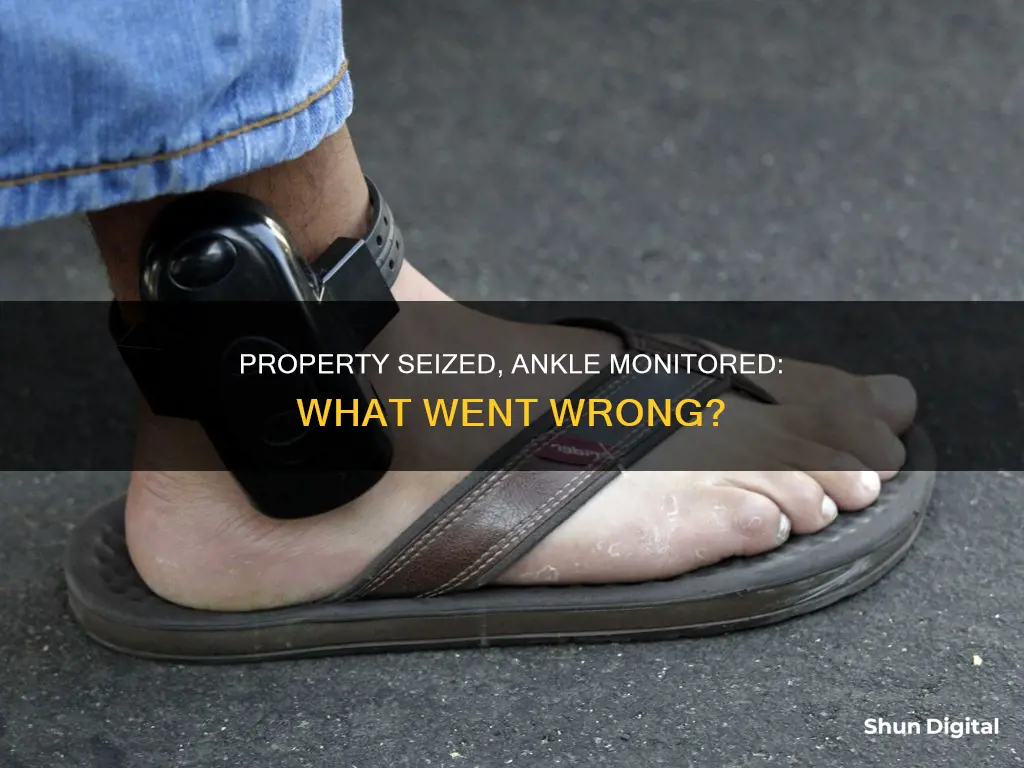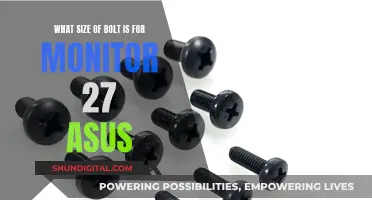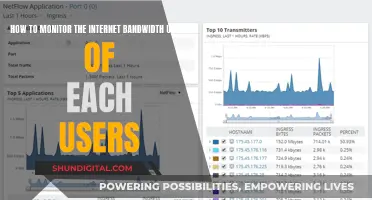
Someone may have their property seized and be forced to wear an ankle monitor as a result of criminal activity. In the United States, civil forfeiture is a process in which law enforcement officers take assets from people suspected of involvement with crime or illegal activity without necessarily charging the owners with wrongdoing. This can include the seizure of cash, vehicles, real estate, and other valuables. Ankle monitors, on the other hand, are typically used as an alternative to pre-trial detention or as a condition of probation. They are often used to ensure that an individual does not violate the terms of their sentence, such as restricting travel or maintaining sobriety. While property seizure and ankle monitors can be used as separate consequences, they may also be used in conjunction, particularly for individuals deemed a flight risk or a danger to the community.
What You'll Learn

The person is a flight risk
An individual may have their property seized and be subjected to ankle monitoring if they are deemed a flight risk by law enforcement or judicial authorities. A "flight risk" refers to the likelihood that a person will attempt to flee or evade the law, avoid criminal prosecution, or fail to comply with court-ordered obligations. This determination is typically made when there is a concern that the individual will not appear for court proceedings or will attempt to escape legal consequences.
When someone is considered a flight risk, law enforcement agencies and courts may take several measures to mitigate this risk, including seizing property and imposing ankle monitoring. These actions are intended to provide both an incentive for the individual to comply with legal requirements and a means to closely monitor their movements and activities.
Property seizure can serve as a significant deterrent against flight risk behaviour. By seizing valuable assets, such as real estate, vehicles, or financial accounts, authorities create a financial disincentive for the individual to flee. The potential loss of these possessions may encourage the person to comply with court orders and remain within the jurisdiction to protect their property interests.
Ankle monitoring, also known as electronic monitoring or house arrest, is often employed in conjunction with property seizure to physically restrict the individual's movements. This involves attaching a monitoring device to the person's ankle, allowing authorities to track their location continuously. The device typically establishes a designated area or perimeter within which the individual must remain, such as their home or a specific geographical region. Any attempts to tamper with the device or violate the established boundaries trigger an alert, enabling law enforcement to respond promptly and take the necessary action.
The combination of property seizure and ankle monitoring provides a robust tool for managing flight risk. The financial implications of property seizure create a compelling incentive for the individual to abide by the law. Simultaneously, ankle monitoring enforces physical boundaries, ensuring the person remains within the jurisdiction and providing real-time location data. This dual approach helps maintain the integrity of the legal process and enhances the likelihood of the individual complying with court-ordered obligations.
The Acer G226HQL LCD Monitor: Does It Have a Camera?
You may want to see also

As an alternative to a jail sentence
Ankle monitors are also used to track the movements of individuals who have been sentenced to restricted travel or activities. Depending on the sentence, the wearer may be restricted to their own home or permitted to travel to work and back.
In some cases, ankle monitors can be used as a condition of probation or parole. For example, in cases of domestic violence, an ankle monitor can be used to ensure the offender maintains a required distance from the victim.
Ankle monitors are often seen as a more cost-effective alternative to incarceration, with the cost of a SCRAM bracelet being significantly lower than the cost of incarceration. Additionally, ankle monitors have been shown to be effective in deterring people from reoffending. For example, in Washington State, a 2013 report found that individuals on SCRAM bracelets were sober 77% of the time and 99.3% sober on any given day.
While ankle monitors can provide an alternative to jail time, it is important to consider the potential drawbacks. The use of electronic monitoring has been criticised for expanding mass incarceration and leading to further punishment for minor technical violations, charging malfunctions, and false alarms. Additionally, the fees associated with wearing an ankle monitor can be a financial burden, especially for households already dealing with the return of an incarcerated loved one.
FDA Monitors: Hormone Usage in Cattle
You may want to see also

To reduce bail
Ankle monitors are often used as an alternative to pre-trial detention or as a condition of probation. They can help to reduce bail by ensuring the defendant will show up for their trial and comply with any conditions set by the court. By agreeing to wear an ankle monitor, the defendant is promising to stay within a certain radius and follow any other rules set out, thereby reducing their flight risk. This can increase the chance of the court granting a lower bail price or even no bail at all.
The cost of bail can be a significant challenge for those who do not have savings. A lawyer can represent the defendant and get the court to reduce their bail, on the condition that they wear an ankle monitor. This is a more affordable option for many, as the cost of an ankle monitor is far lower than the cost of incarceration. For example, in the US, house arrest with an ankle monitor costs about $6,000 per year, compared to over $20,000 a year to incarcerate someone in prison.
Ankle monitors are also used to ensure that a defendant is complying with the terms of their sentence or bail conditions. For example, a Secure Continuous Remote Alcohol Monitor (SCRAM) bracelet can detect alcohol in a person's sweat, alerting authorities if they violate the terms of their release by drinking. This type of monitor can be used as an alternative sentence for those with substance abuse issues, instead of prison time.
In some cases, ankle monitors can be used as a condition of bail or parole for serious crimes such as murder, sexual assault, or major drug offences. They can also be used for repeat offenders, or those who have violated bail or parole terms in the past, as a way to prevent further offences.
Best Monitors for Your Home Office Setup
You may want to see also

To monitor sobriety
Ankle monitors are often used as an alternative to prison sentences for people who show clear signs of substance abuse issues. A judge may opt for this route as prison can be the worst possible place for such individuals.
Ankle monitors can be used to monitor sobriety, ensuring that a person isn't violating the terms of their sentence. A Secure Continuous Remote Alcohol Monitor (SCRAM) bracelet, for example, can detect alcohol in a person's sweat and alert authorities if the person violates the terms of their release by drinking.
SCRAM bracelets are waterproof and fairly lightweight, and they are mandatory for some offenders in 35 US states and in England. They are also used in Washington State, where they have been found to be effective in deterring people from reoffending. In 2013, a report showed that 77% of those on SCRAM remained sober throughout the program, with 99.3% being sober on any given day.
In addition to monitoring sobriety, ankle monitors can also be used to ensure that individuals adhere to specific rules and regulations, such as refraining from drinking alcohol, and can be used in conjunction with drug and alcohol treatment programs. They can also be used to track an individual's movements and location, with alerts being sent to authorities if the person goes outside of a designated area.
While ankle monitors are promoted as a humane alternative to jail, there is a financial burden associated with them as private companies often charge defendants hundreds of dollars a month to wear the devices. This can create a cycle of debt and further legal issues for those who cannot afford the cost.
Unscrewing the Hanspree Monitor: Detaching the Base Safely
You may want to see also

To monitor location
Ankle monitors are used to track the location of individuals who have been sentenced to restricted travel or activities. They are often used as an alternative to prison, allowing people to remain free while awaiting trial, provided they meet certain conditions set by the court. They are also used for people on house arrest, bail, probation, or parole.
The monitors use GPS technology to determine the wearer's whereabouts and transmit a signal to a base unit, usually located in the home. If the wearer goes outside a designated area, the device vibrates and emits a loud tone, notifying them that they are about to breach the conditions of their release. If they do not return to the designated area, the device sends an alert to the authorities.
In addition to location tracking, ankle monitors can also detect alcohol in a person's sweat, alerting authorities if the person violates the terms of their release by drinking. This is known as a Secure Continuous Remote Alcohol Monitor (SCRAM) bracelet.
The use of ankle monitors allows people to avoid incarceration, particularly for first-time and non-violent offenders. They are also cheaper than the cost of incarcerating someone in prison. However, the wearer typically has to pay for the cost of the monitor, including installation and daily use fees, which can amount to hundreds of dollars per month.
Ankle monitors provide a way to ensure people abide by the conditions of their sentence while allowing them a degree of freedom and the ability to work, attend school, or take part in treatment programs.
Resetting Your ASUS Monitor's Colors: A Step-by-Step Guide
You may want to see also
Frequently asked questions
Ankle monitors are usually used as an alternative to prison sentences, often for first-time and non-violent offenders. They are also used when a person shows clear signs of substance abuse issues, as prison can be detrimental to their recovery. Ankle monitors are also used to ensure that a person isn't violating the terms of their sentence with regards to their location and sobriety.
Ankle monitors are much cheaper than the cost of incarcerating a person. They also work to deter people from reoffending and can be used to ensure that a person appears for their day in court.
The rules for wearing an ankle monitor vary depending on the individual's situation. They may include sticking to a specific area, avoiding certain people, adhering to a curfew, regularly checking in with a probation officer, and abstaining from drugs and alcohol.







